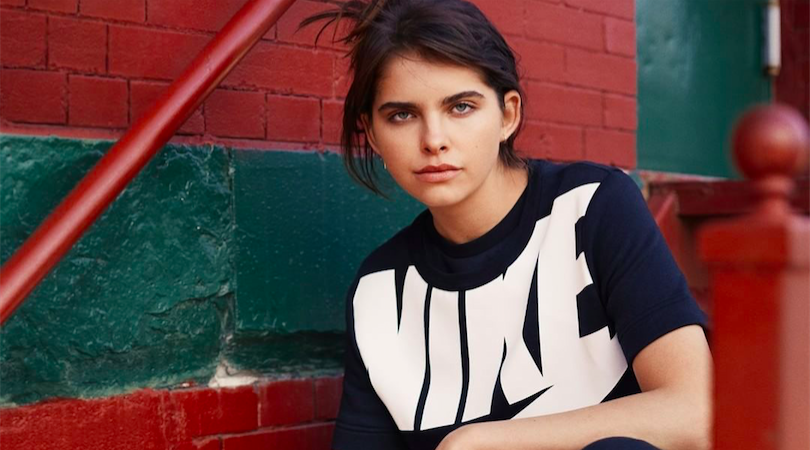Nike, Adidas, Lululemon, Vans and Patagonia are all gaining traction with the teen crowd while Under Armour and The North Face appear to be losing ground, according to Piper Jaffray’s Taking Stock With Teens Spring 2017 report.
Overall, the broader findings were favorable for athletic brands. Unaided, 41 percent of overall teens named an athletic apparel brand as their preferred apparel brand, although largely driven by males.
Nike’s dominance as the preferred footwear brand among teens continued but the brand also saw a big leap in apparel preference. Adidas’ turnaround was marked in notable gains in both apparel and footwear among both genders. Interest in Vans and Converse were close to the same as the same survey taken in spring 2016.
Despite significant SKU expansion and reported category growth, male footwear mindshare for Under Armour has remained 1 percent across both income groups in to Piper Jaffray’s past four surveys. Among outerwear brands, Patagonia ranked sixth as a new brand worn by males and outranked The North Face among upper-income athletic brands for the first time ever.
The survey, representing the investment firm’s 33rd semi-annual report, was based on a online surveys and in-classroom interviews with 5,500 teens with an average age of 16. Of those surveyed, 1,400 teens were broken out as those in the upper-income group with an average household income of $100,000. That group represents 20 percent of U.S. household units.
About 4,100 of the respondents were considered in the average-income group, which features household with income around $55,0000, aligning more closely with the U.S. median. The survey was done in a partnership with DECA and consisted of classroom visits and online surveys.
Overall Footwear Preference
In the footwear category, Nike’s share grew with upper-income teens while decreasing slightly in the average-income bracket but dominated overall. Among upper-income teens, Nike was preferred by 52 percent of respondents, up from 48 percent in spring 2016. In that income bracket, 67 percent of males preferred Nike this year versus 33 percent of females.
Among upper-income teens, Adidas jumped to third in footwear preference with an 8 percent share, improving from fourth place and a 4 percent share in spring 2016. Vans remained in second, at a 9 percent share versus 10 percent a year ago. Converse dropped to fourth (6 percent share) behind Adidas, down from third (7 percent) in spring 2016.
Rounding out the top-ten footwear brands by preference among upper-income teenagers was Steve Madden, 3 percent; Sperry, 2 percent; DSW, 2 percent; Foot Locker, 1 percent; Birkenstock, 1 percent; and Payless ShoeSource and Ugg, tied for 10, both 1 percent.
Footwear preferences among average-income teens was largely the same. Two differences was Nike lost some ground, preferred by 50 percent of teens, down from 54 percent in spring 2016. Adidas also moved into second preferred brand among males, ahead of Vans. Under Armour also made the overall top-ten list at 10 after not making the cut in spring 2016.
Overall, the top-ten preferred footwear brands among teens in the average-income bracket was Nike, 50 percent; Vans, 8 percent; Adidas, 8 percent; Converse, 6 percent; Foot Locker, 2 percent; Sperry, 2 percent; Steve Madden, 1 percent; Birkenstock, 1 percent; DSW, 1 percent; and Under Armour, 1 percent.
Preferred Athletic Footwear Brands
Asked about their preferred athletic footwear brands, overall respondents in the upper-income bracket responded Nike, 80 percent; Adidas, 8 percent; New Balance 2 percent; Asics, 2 percent; and Under Armour, 2 percent. Among males in that bracket, the top five were Nike, 78 percent; Adidas, 8 percent; Under Armour, 2 percent; New Balance, 2 percent; and Asics, 1 percent. Among females, the top five were Nike, 82 percent; Adidas, 8 percent; Asics, 3 percent; New Balance, 1 percent; with Brooks, Saucony and Under Armour all tied for fifth, at 1 percent.
Overall Apparel Preference
In the apparel category, Nike was preferred by 31 percent of teens in the upper-income category, up from 21 percent in Spring 2016. The figure had risen to 29 percent in Piper Jaffray’s fall 2016 survey. Even more slanted than footwear, 47 percent of males preferred Nike apparel versus only 8 percent with women. Nike was behind American Eagle and Forever 21 in apparel popularity with teen females and was only slightly ahead of Lululemon, which was preferred by 6 percent of upper-income teen females.
After Nike, the top ten most popular brands in apparel share among upper-income teens was American Eagle, 10 percent; Forever 21, 5 percent; Lululemon, 3 percent; Adidas, 3 percent; H&M, 3 percent; Hollister, 2 percent; Urban Outfitters, 2 percent; Vans, 2 percent; with PacSun and Ralph Lauren tied for tenth, both at 2 percent.
Among other athletic brands, Adidas landed at second this year (4 percent) among upper-income male teens, up from four (3 percent) in spring 2016. Vans reached five (3 percent), up from eight (2 percent) a year ago. Under Armour moved up to six (3 percent) after not making the top-ten in spring 2016.
Among the brands in the active space, Lululemon moved up to four after not landing in the top-ten in the spring 2016 survey when it had a 1 percent share. Adidas moved up to five, up from 10 and a 2 percent share in spring last year. PacSun also made the top-ten list this year after not making it last year.
Similar to Nike, other core athletic brands skewed male, Adidas landed at second this year (4 percent share) in apparel preference with upper-income male teens, up from four (3 percent) in spring 2016. Vans reached five (3 percent) with upper-income male teens, up from eight (2 percent) a year ago. Under Armour moved up to six (3 percent) after not making the top-ten rankings in spring 2016.
The top-ten preferred clothing brands among teens in the average-income bracket were Nike, 27 percent; American Eagle, 10 percent; Forever 21, 5 percent; Ralph Lauren, 4 percent; Victoria’s Secret, 4 percent; Hollister, 3 percent; H&M, 3 percent, Adidas, 3 percent; PacSun, 3 percent and Rue21, 2 percent.
Preferred Athletic Apparel Brands
Asked about their preference specifically for athletic apparel brands, Nike come in first at 69 percent among those in the upper-income bracket, followed by Adidas, 8 percent; Lululemon, 7 percent; Under Armour, 7 percent; and Patagonia, 1 percent. In spring 2016, the same query brought back Nike, 71 percent; Adidas, 7 percent; Under Armour, 5 percent; Lululemon, 5 percent and The North Face, 1 percent.
Among males, the top five preferred athletic brands among upper-income males for spring 2017 was Nike, 71 percent; Under Armour, 10 percent; Adidas, 6 percent; Lululemon, 2 percent; and Bauer, 1 percent. Among upper-income females, the top-five were Nike, 65 percent; Lululemon, 14 percent; Adidas, 9 percent; Under Armour, 3 percent; and Fabletics, 1 percent. Fabletics replaced Athleta on the list among women since last year.
Top Fashion Trends
The top ten fashion trends currently among upper-income females was leggings/Lululemon, 25 percent; Chokers, 11 percent; Converse, 5 percent; Victoria’s Secret, 4 percent; Adidas, 4 percent; ripped jeans, 4 percent; jeans, 3 percent; boots, 3 percent; Nike/Jordans, 2 percent; and Ugg, 2 percent.
Asked about casual & athletic popular trends, male teens in the upper-income bracket identified Nike/Jordan, 18 percent, as the hottest trend currently. That was followed by jogger pants, 8 percent; athletic wear, 6 percent; khakis/chinos, 5 percent; Adidas, 4 percent; Lululemon, 4 percent; ripped jeans, 3 percent; preppy, 3 percent; jeans, 3 percent; and Timberland, 2 percent.
Brands They’re Starting To Wear
Asked what brands they’re starting to wear, Adidas, 10 percent, came out ahead of Nike, 9 percent, among upper-income males. In Spring 2016, Nike, 11 percent share, topped the list while Adidas was third at 7 percent.
The overall top-list of brands upper-income males are starting to wear in spring 2017 was Adidas, 10 percent, Nike, 9 percent; Ralph Lauren, 6 percent; American Eagle, 5 percent; Under Armour, 4 percent; Patagonia, 3 percent; Vans, 3 percent; Lululemon, 2 percent; Gucci, 2 percent; and Vineyard Vines, 2 percent.
Among upper-income females, the top-ten list of brands they’re starting to wear were American Eagle, 7 percent; Urban Outfitters, 6 percent; Nike, 6 percent; Forever 21, 5 percent; Adidas, 4 percent; Lululemon, 4 percent; Victoria’s Secret, 4 percent; H&M, 4 percent; PacSun, 3 percent; and Free People, 3 percent.
Brands Teens No Longer Wear
Asked which brands they no longer wear, Under Armour came in first at 11 percent among upper-income males. The rest of the top ten were Gap, 10 percent; Adidas, 9 percent; Nike, 7 percent; Reebok, 6 percent; Aeropostale, 6 percent; Puma, 4 percent; American Eagle, 4 percent; Hollister, 4 percent; and Skechers, 3 percent.
Among upper-income females, the top brand they indicated they no longer this year was Aeropostale, 26 percent. That was followed in the top ten by Justice, 21 percent; Hollister, 10 percent; Abercrombie & Fitch, 9 percent; American Eagle, 3 percent; Forever 21, 3 percent; Old Navy, 2 percent; Gap, 2 percent; Adidas, 2 percent; and Nike, 1 percent.
Favorite Websites
The favorite website for teens in the upper-income bracket was Amazon with a 43 percent share, up 200 basis points year over year versus spring 2016. Rounding out the top ten were Nike, 5 percent; American Eagle, 5 percent; Forever 21, 3 percent; eBay, 2 percent; Urban Outfitters, 2 percent; Victoria’s Secret, 2 percent; Lululemon, 1 percent; Pacific Sunwear, 1 percent; and Zumiez, 1 percent.
Connective Devices
Among connective devices, Fitbit continued to dominate with a 71 percent share across both upper-income and average-income brackets versus 72 percent in spring 2017. Apple jumped to second with 10 percent share, up from third with a 6 percent share in spring 2016. Nike slid to third with a 10 percent share versus second at 12 percent in spring 2016. Rounding out the top five preferred connected devices for spring 2017 was Garmin, 4 percent; and Jawbone, with a 1 percent share.
Favorite Fitness App
Fitbit also ranked as the favorite fitness app with a 24 percent share across both upper-income and average-income brackets. Fitbit was followed by Apple, 17 percent; Under Armour 15 percent; Nike, 14 percent; and Samsung, 4 percent. Rounding out the top-ten of favorite fitness apps for spring 2017 were Sworkit, 2 percent; Runkeeper, which is owned by Asics, 2 percent; Garmin, 1 percent; Lose it!, 1 percent; and Sleep Cycle, 1 percent.
Photo courtesy Nike
















